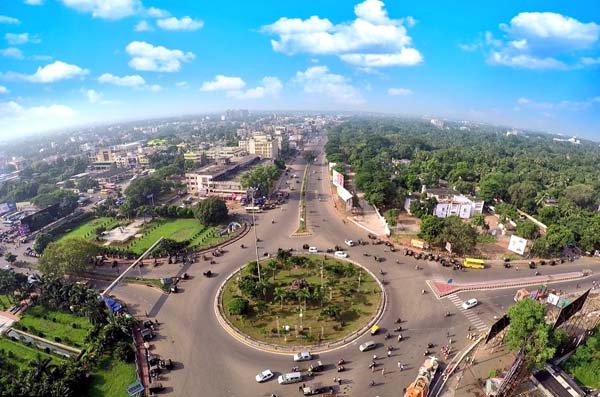Happy Birthday Bhubaneswar! Young At 76, It’s Time For Capital City To Deliver

Exactly 76 years ago on April 13, which happened to be Maha Bisuba Sankranti, the foundation for independent India’s first planned capital city was laid in Bhubaneswar as the capital of modern Odisha by the nation’s first Prime Minister Jawaharlal Nehru.
That was a time when Bhubaneswar was known as a city of banyan trees, pensioners’ dream home, quite and peaceful walking streets. Now, the city is congested, polluted, expensive and has been engulfed completely by its inhabitants, with an influx of people from all over India.
However, despite all odds, one can still walk into a forest, see the Shiva, Buddha, Jain Temple, view the sunset from top of Khandagiri & Udayagiri Hills, enjoy boating inside Kanjia Lake, drink a cup of tea in some corner of the city, walk around Old Town and try some of the hotel and street foods.
Interestingly, the principle that was followed by founding director Otto H Königsberger to plan Bhubaneswar 76 years ago were — women could easily walk to a health centre, market, school without depending on others; children would be able to walk to their school and playground located within walking distance; city driven by grid-shaped square. The driving principle of Bhubaneswar City Plan was neighbourhood-based city planning inspired by cities of former Soviet Union, Barcelona, Rio de Janeiro, London, Stuttgart.
That was a time when Singapore had not become an independent republic or thought of as a city state. Today, Bhubaneswar is trying to become Singapore. The question is, does Bhubaneswar have the resources of investing in recreating artificial forests or should the city repent butchering its own banyan trees that once use to define its green identity.
The reality is, in this process of becoming a world-class city, the core of ecological sensitive planning is now replaced by concrete jungles with big towers. Space is being gained by squeezing public space or waterways turned into sewerage drains. So much so that the generations born post-Nineties can’t believe their parents lived here.
Bhubaneswar may not have preserved its neighbourhood plan, but has at least done something interesting by hosting Champions Trophy Hockey, Asian Athletics Meet where 45 nations added their footprint, World Hockey League, and the prestigious FIH Men’s World Cup in 2018 and 2023 that brought 15 of the world’s top hockey-playing nations teams along with hosts India to the Odisha capital.
These events, apart from promoting sports, enhance the brand image of Temple City globally like never before and, hopefully, the city will soon able to market its brand.
Similarly, gateway to the world opened in 2013 when first direct flights connected Bhubaneswar with Kuala Lumpur and Bangkok, and the airport was accorded international status.
Hopefully, Bhubaneswar is now in a better position to welcome its international guests — not only for tourism but also business purposes to help a makeover and erase its tag of being capital of India’s poorest state.
However, what is worrying is that in its 75-year journey, the once Green capital has become the hottest city. The hope is that Bhubaneswar will be able to weave its 1948 Neighbourhood dream into its current Smart City plans, so that women and others are able to walk freely, children can go to school without any fear, kids find space to play in Neighbourhood playgrounds, if not Olympics the city at least can host National Game and get back its lost Spring while cooling it down.
Modern Bhubaneswar is a gift of experiments and efforts of late 19th century when Parks movement, Beautiful city movement, Progressive movement for government reform and improvement of public health through better infrastructure took place.
As the city evolved from diverse journey of Shivasim Buddhism, Jainism etc. they all strengthened a desire to produce a more systematic urban form.
Bhubaneswar is presently going through a phase of rebuilding its identity as a vibrant city in eastern India, and claim to be main hub for services, transport and administration. While its historic core heritage remains undisturbed, a new Sea Food Park along with a modern Agricultural Farming Park have come up in western corridor along with Information Technology Park and modern educational institutions.
Its airport is ready to fly beyond borders, plenty of waterbodies might be revived to rejuvenate its natural sponges, a mosaic of urban villages could be set up that could be compared with any international urban regions.
It’s time for Bhubaneswar to deliver. Whether or not it can become Singapore or Amsterdam, let parents of this heritage city not snatch away its own identity as Temple City.
Happy birthday Modern Bhubaneswar! You are now 76, but still very much in your youth capable of scripting an inspiring urbanisation story of India.

Comments are closed.